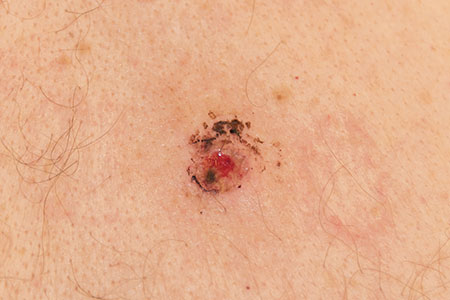Skin lesions can vary widely in appearance and type, ranging from benign growths to potentially cancerous spots. Whether you’re considering skin lesion removal for cosmetic reasons or because of a medical concern, understanding the process, benefits, and aftercare is crucial. This guide provides comprehensive information on skin lesion removal to help you make informed decisions about your treatment.
Understanding Skin Lesions
Types of Skin Lesions
-
Benign Lesions:
- Moles (Nevi): Commonly pigmented growths that are generally harmless.
- Warts: Caused by human papillomavirus (HPV), appearing as rough, raised bumps.
- Skin Tags: Small, soft growths that typically appear in areas where skin rubs together.
- Seborrheic Keratosis: Non-cancerous, often brown or black, and slightly raised.
-
Malignant Lesions:
- Basal Cell Carcinoma (BCC): The most common skin cancer, appearing as a pearly bump or sore that doesn't heal.
- Squamous Cell Carcinoma (SCC): May appear as a scaly, red patch or an open sore.
- Melanoma: A serious form of skin cancer that often appears as a new or changing mole.

Reasons for Skin Lesion Removal
Medical Reasons
- Diagnosis: To determine if a lesion is cancerous or precancerous.
- Prevention: To remove lesions that could potentially become cancerous.
- Treatment: To eliminate lesions that cause discomfort or functional issues.
Cosmetic Reasons
- Aesthetic Improvement: To remove lesions that affect appearance or self-esteem.
- Functionality: To address lesions in areas prone to irritation or where they affect daily activities.
Skin Lesion Removal Procedures
1. Excisional Surgery
- Procedure: The entire lesion, including a margin of healthy skin, is surgically removed.
- Best For: Larger or deeper lesions, including suspected malignancies.
- Recovery: Requires stitches and may leave a scar, but is effective for complete removal.
2. Cryotherapy
- Procedure: The lesion is frozen with liquid nitrogen, causing it to fall off.
- Best For: Warts, small skin tags, and superficial lesions.
- Recovery: Minimal downtime; some swelling and redness may occur.
3. Electrosurgery
- Procedure: Uses an electric current to burn off the lesion.
- Best For: Precancerous lesions and small growths.
- Recovery: Generally quick, with minimal scarring.
4. Laser Therapy
- Procedure: Uses focused light beams to remove or reduce the lesion.
- Best For: Certain types of skin lesions and pigmented lesions.
- Recovery: Typically involves minimal downtime with gradual fading of the lesion.
5. Mohs Micrographic Surgery
- Procedure: Layers of cancerous skin are removed and examined until no further cancerous cells are detected.
- Best For: Skin cancers in delicate areas or those that have recurred.
- Recovery: Involves multiple stages but offers high precision.
Preparing for Skin Lesion Removal
Consultation
- Assessment: A dermatologist or surgeon will evaluate the lesion and discuss removal options.
- Preoperative Instructions: Follow guidelines regarding medications, fasting, or other preparations.
Pre-Surgery Considerations
- Medical History: Inform your doctor about any medical conditions, allergies, or medications.
- Skin Care: Avoid sun exposure and certain skin care products before the procedure.
During the Procedure
Anesthesia
- Local Anesthesia: Most skin lesion removals are performed with local anesthesia to numb the area.
- Sedation: In some cases, sedation may be used for comfort.
Procedure Details
- Duration: The length of the procedure varies based on the type and size of the lesion.
- Care: The area will be cleaned, and the lesion will be removed according to the chosen method.
Post-Procedure Care
Immediate Aftercare
- Wound Care: Follow instructions for cleaning and protecting the wound.
- Pain Management: Over-the-counter pain relievers or prescribed medications may be recommended.
Recovery
- Healing Time: Varies based on the procedure; typically, most people can resume normal activities within a few days.
- Follow-Up Appointments: Necessary to monitor healing and check for any signs of complications.
Risks and Complications
Possible Risks
- Infection: Proper wound care can minimize the risk.
- Scarring: All procedures can leave scars, but techniques are used to minimize this.
- Recurrence: In cases of cancerous lesions, additional treatment may be required.
Managing Risks
- Adherence to Care Instructions: Following post-procedure guidelines is crucial for proper healing.
- Monitoring: Regular check-ups to ensure complete removal and healing.
Conclusion
Skin lesion removal can effectively address both medical and cosmetic concerns. By understanding the different procedures, preparing appropriately, and following post-care instructions, you can achieve optimal results and a smooth recovery. Consult with a qualified dermatologist or surgeon to determine the best approach for your specific needs and ensure that you are well-informed throughout the process.